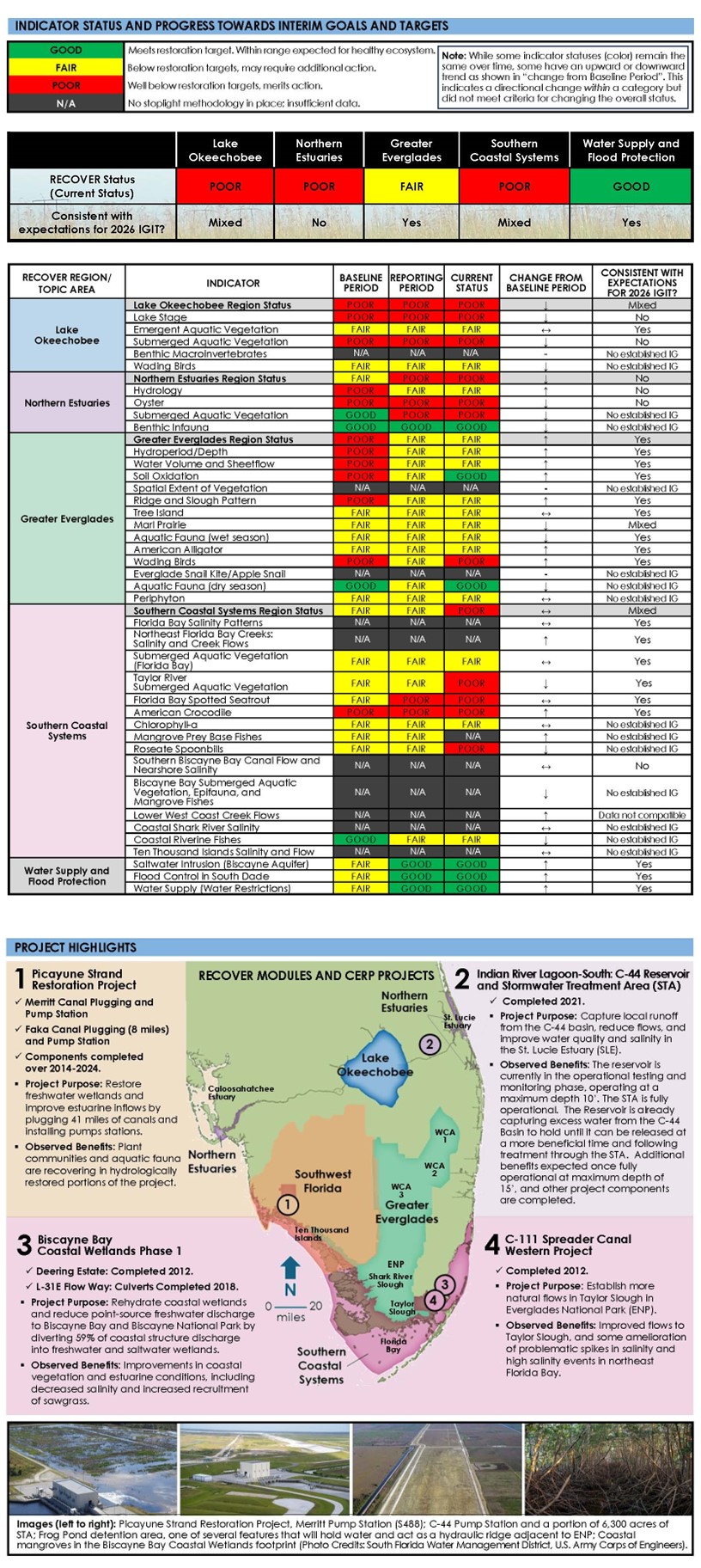The 2024 System Status Report compares real-world monitoring of hydrologic, ecological, and water supply and flood protection status with modeled expectations from the 2026 incremental benchmark of the 2020 Interim Goals and Interim Targets report to assess if these goals are being met. The real-world assessment includes data from the Baseline Period (Water Year (WY) 2005-2017), the Reporting Period (WY2018-WY2024), and the current status (most recent year with data available).
Water managers and ecologists use a “water year” to measure time which is synchronized with the annual hydrologic cycle of wet and dry seasons instead of the calendar year. The water year (WY) begins on May 1 (the beginning of wet season) of the preceding calendar year and ends on April 30 (the end of the following dry season). For example, WY2018 began on May 1, 2017, and ended on April 30, 2018. This is like high school classes being identified by the year of graduation.
Key Takeaways from the 2024 System Status Report
-
Weather and changes in water management operations were the primary drivers of observed status in the Reporting Period (Water Years 2018-2024) across the system.
-
While CERP construction and implementation is underway, modeling for most indicators expected little to no change in status by 2026 (2020 Interim Goals and Interim Targets report). Most RECOVER regions and ecological indicators remain “Fair” or “Poor” in status. Water supply and flood protection indicators ranked “Good” due to ample rainfall and non-CERP water management operations in the Reporting Period.
-
Some hydrologic benefits have been observed locally due to incremental CERP project completion and updated operational plans. With the continued completion of projects, substantial improvements are expected across many indicators, but may lag behind hydrologic improvements, as ecological indicators respond on different time scales.
-
CERP Projects need to be expedited to prevent further decline throughout the system. In the meantime, water managers should utilize allowable flexibility in operations to maximize benefits and minimize further declines.
-
Continuous, system-wide monitoring is key to link hydrologic changes with indicator conditions across the Everglades. Failing to do so limits our ability to report on annual statuses, compare real world status and trends with model expectations of progress towards Interim Goals and Interim Targets, and provide a metric of restoration success.
For the 2024 SSR, RECOVER has adopted “stoplights” to convey indicator status and change in status over time. The stoplight methodology for each indicator is unique but shares a common definition for each stoplight color/status. Status definitions were made consistent with the biennial South Florida Ecosystem Restoration Task Force System-Wide Ecological Indicators report. The 2024 System Status Report describes status and progress toward Interim Goals and Interim Targets for indicators in RECOVER’s Lake Okeechobee, Northern Estuaries, Greater Everglades, and Southern Coastal Systems regional modules. The Southwest Florida RECOVER region, established in 2021, does not currently have Interim Goals and RECOVER monitoring is limited to the Ten Thousand Islands. For the purposes of this report, the monitoring occurring within the region is captured under the Southern Coastal Systems section where the modules overlap.
